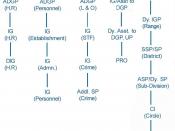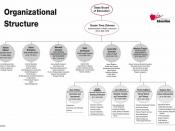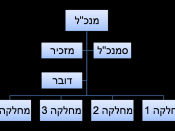AbstractToday, companies face highly competitive businesses and daily challenges. Good Sport is not the only company who changed their strategy to better manage organizational goals. The company's organizational structure, culture, conflict management and political power structures were analyzed. Good Sport's simulation was assessed for alternate strategies and optimal solutions. When faced with issues, Good Sport's management identified and addressed processes where underlying issues hindered structure and culture. Realizing problems and facing organizational challenges provided opportunity for Good Sport to be more successful in achieving their objectives. Good Sport can improve their culture, structure and leadership by implementing strategies that strengthen the foundation of its organization.
IntroductionIn Managing across the organizations, Good Sport was divided on issues that related to leadership style, organizational structure and culture, political and power structures, conflicting management strategies and an overall failure to achieve objectives in being a trend setter of the manufacturing fitness equipment industry.
The Chief Executive Officers (CEO) and managers faced challenges in overcoming how to maintain a motivated, high performing, extremely productive workforce that yields a marketable product to customers and maintains a competitive edge in the fitness equipment industry. Each organizational structure encountered challenges within departmental cultures as roles were more demanding and defining along the process. The organizational dynamics of interpersonal and conflict management sources were pervasive from sales to production and finally upper management.
The prevalent management style at Good Sport did not foster decision making, creativity, initiative nor support managers in motivating employees. The organization suffered from a stifling cultural structure that allowed the previous CEO to manage by controlling information, limit coordination among departments and influence organizational success by wielding political power as an effective management tool. Thus, a takeover by the new CEO encouraged managers to respond quickly to issues and empowered them to provide leadership...


